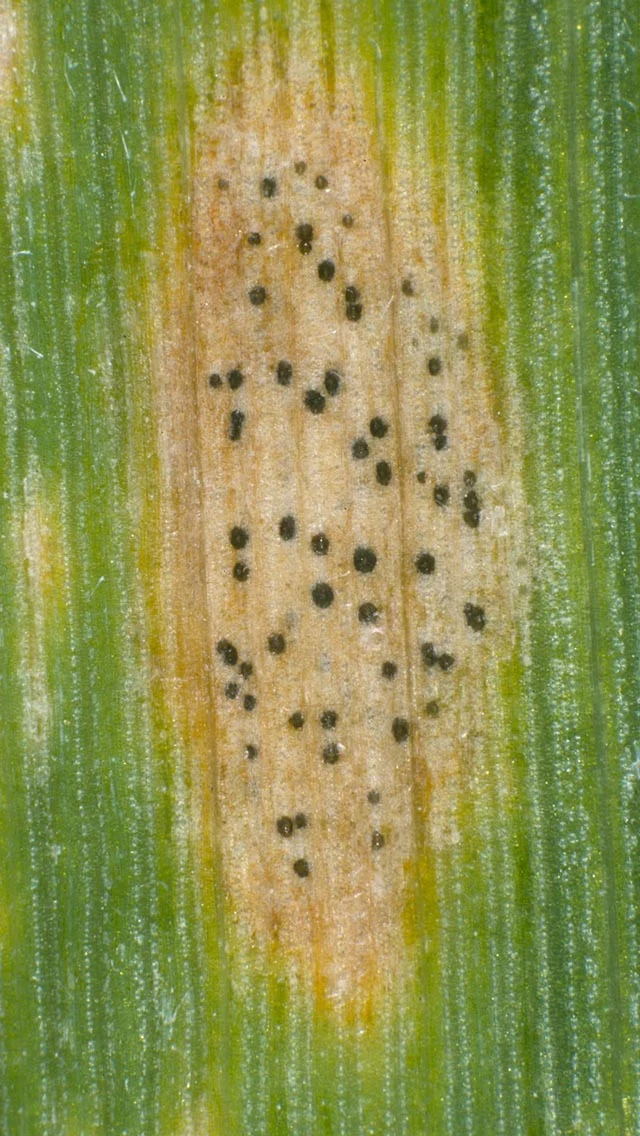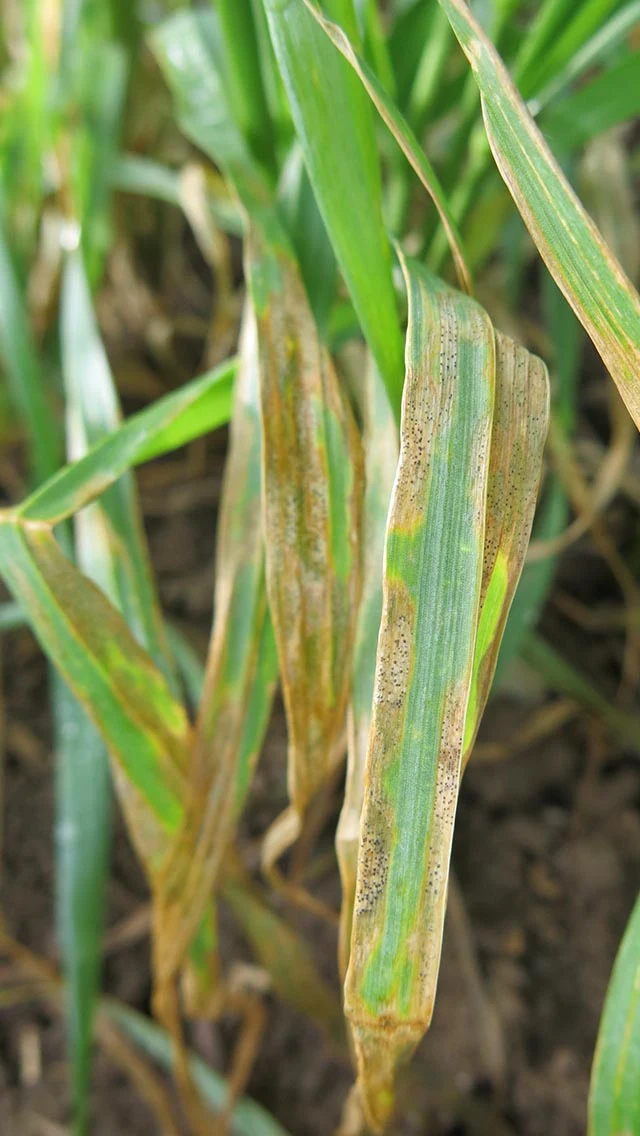
Septoria Leaf Blotch
Zymoseptoria tritici (formerly Mycosphaerella graminicola, formerly Septoria tritici)
Pathogen
Fungus
Hosts
Wheat, rye, triticale, grasses
Symptoms
Septoria (tritici) is confined to the lower leaves early in the season but later affects upper leaves and the stem and also the ear. It is characterised by pale brown to greenish-grey oval lesions. Occasionally the lesions increase in size and often join up to affect large areas of the leaf. On close examination small black spore cases (pycnidia) can be seen within mature lesions. Visible symptoms only become apparent towards the end of the life-cycle, and the other 80 % is largely asymptomatic. Leaves can appear green and healthy during the long latent phase where the disease grows in between the leaf cells without damaging them. Once latent mycelium becomes established, the switch to visible lesions can occur in a matter of days.
In contrast S. nodorum which mainly infects the ear and upper leaves is characterised by darker brown lesions.
Development
The disease overwinters as dormant mycelium, pycnidia and pseudothecia on infected wheat straw debris, grass hosts, volunteers and autumn-sown crops. It is dispersed by water droplets as rain or dew.
The usual life-cycle for Septoria is 15 – 18 days, although it can remain in the latent phase for up to 28 days, with no visible symptoms. Lesions are first evident on crops in the autumn.
Favourable Factors
Wet and humid weather with temperature of 15°C to 25°C and free water -wet spring and summers are ideal.
Importance
This disease is widespread through the UK. Yield losses can range from 30 % to as high as 50 % in high pressure areas and seasons. These penalties result from a reduction in photosynthetic capability of primarily the upper three leaf layers from infection throughout the season. Every 1 % of disease on the flag leaf incurs a 1 % yield penalty or 0.6 % yield penalty on leaf 2. It can also lead to a reduced grain size and a poor sample.
Control
Correct choice of fungicide at the onset of infection
Varietal tolerance
Removal of volunteers and crop debris which provide a `bridge` to early sown crops
Later drilling
Crop rotation

Note the black spore cases (pycnidia)

Typical leaf symptoms (Photo C. Lincoln)

Freshly developing lesions (Photo C. Lincoln)


